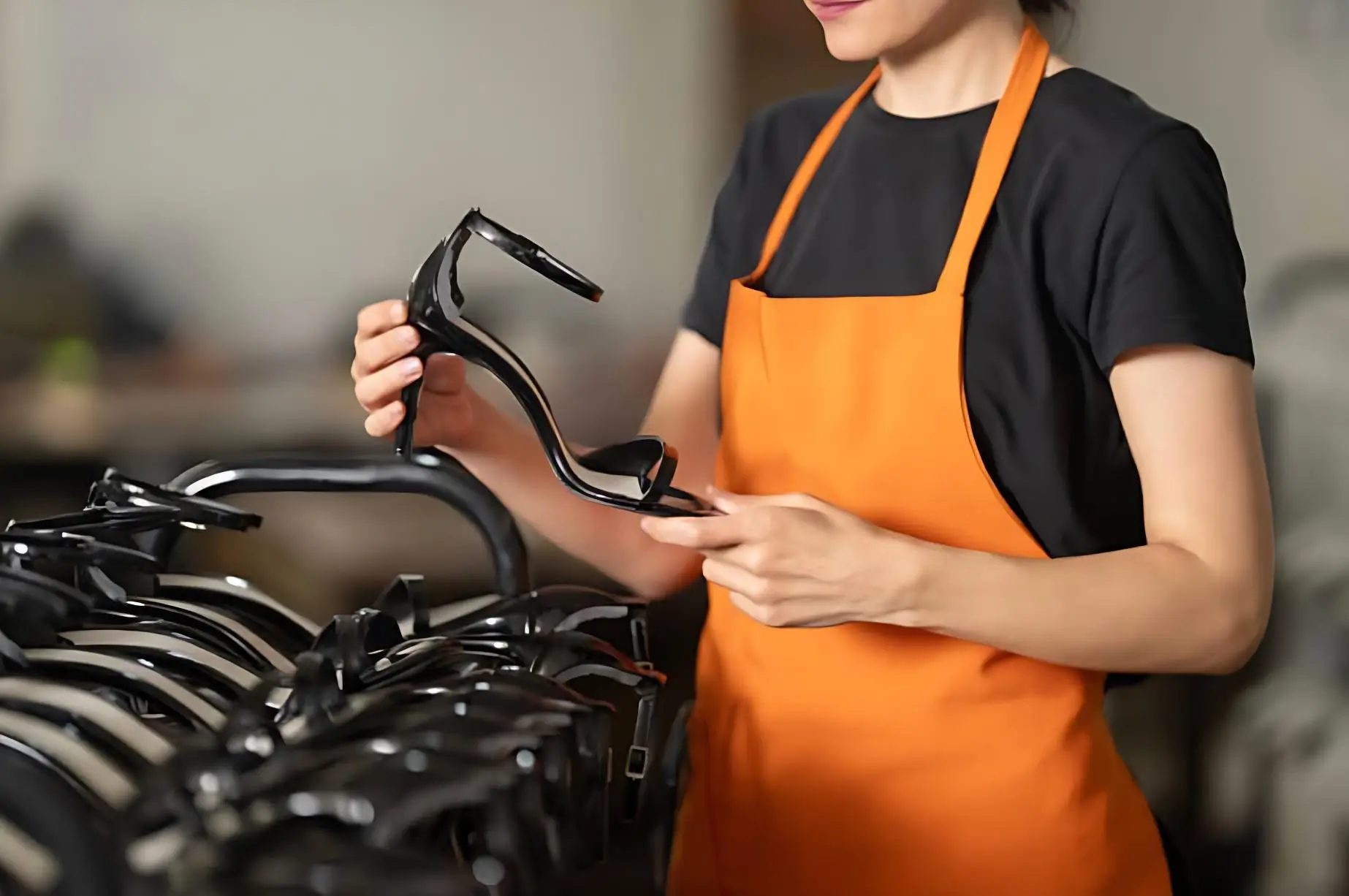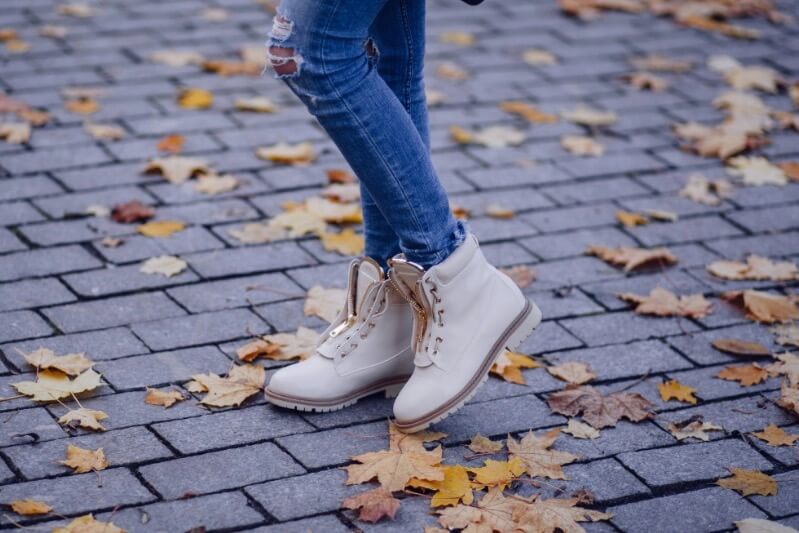I’ve spent over 15 years in the trenches of footwear sourcing in China. I’ve had the privilege of helping dozens of brands, from ambitious startups to established retailers, turn their design ideas into real, profitable businesses. I’ve seen brands succeed spectacularly, and I’ve seen them fail catastrophically.
And I can tell you this: the difference often comes down to avoiding a few common, but very costly, mistakes. According to a 2023 report by the Footwear Distributors and Retailers of America (FDRA), nearly 40% of emerging brands cite supply chain issues as a primary barrier to growth.
This isn’t just another theoretical guide; this is a playbook forged from real-world experience, now backed by industry data and best practices. I’m going to break down the 10 biggest mistakes I see emerging brands make when sourcing shoes from China, and give you a clear, actionable plan to avoid them.
The 10 Biggest Sourcing Mistakes (And How to Avoid Them)
Mistake #1: Choosing a Supplier Based Only on the Lowest Price
This is, without a doubt, the most common and the most dangerous mistake. It’s easy to get excited when you see a very low price, but in manufacturing, you almost always get what you pay for.
The Problem: A factory that offers a price that seems too good to be true is often cutting corners somewhere. This could mean they are using lower-grade materials, they have an inexperienced workforce, or they have a non-existent quality control process. I’ve seen brands who chose the cheapest option end up with a container full of shoes, facing a product return rate exceeding 15%. The cost of dealing with those returns and the damage to their brand’s reputation was far greater than the few dollars they saved on the factory price.
The Solution: A 3-Step Vetting Protocol Based on ISO 9001 Principles
You need to think about total value, not just the lowest price. A great partner might cost a few dollars more per pair, but they will deliver a high-quality, consistent product. Your vetting process should be based on international standards.Step 1: The Factory Audit (Go Beyond the Website): A comprehensive factory audit, as defined by international standards like ISO 9001:2015, should verify not just the factory’s legal status but its actual production capabilities, machinery calibration records, and internal quality management systems.
Step 2: The Financial Health Check (Are They Stable?): Assess the factory’s financial stability. Are they able to meet their obligations? Red flags include high staff turnover or sudden changes in payment terms.
Step 3: The KPI Alignment (Do They Share Your Goals?): A great partnership is based on shared goals. Discuss Key Performance Indicators (KPIs) like On-Time Delivery rates and Defect Rates from the very beginning.
Mistake #2: Not Verifying if They Are a Real Factory or a Trading Company
The internet is full of “suppliers” who claim to be factories but are actually just trading companies or middlemen.
The Problem: Working with a trading company isn’t always a bad thing, but you need to know who you are dealing with. A trading company will add their own margin to the price, which means you are paying more than you need to. Communication can also be a problem, as your feedback has to go through a middleman before it gets to the actual factory.
The Solution: You must do your due diligence to verify that you are dealing with a real shoe factory.
Ask for a live video tour of their factory during working hours. A real factory will be happy to show you their production lines.
Hire a third-party audit company to do an on-site inspection. This is the best way to get a real, unbiased assessment of their capabilities.
Mistake #3: Using a Vague or Incomplete Tech Pack
Your tech pack is the single most important document in the entire production process. It is the blueprint for your shoe.
The Problem: Many new brands make the mistake of providing a factory with a vague tech pack. They assume the factory will “know what they mean.” This is a recipe for disaster. A vague tech pack will lead to a sample that doesn’t match your vision, often resulting in 2-3 additional rounds of sampling, which can delay your launch by over a month.
The Solution: Your Tech Pack is Your Contract
Your tech pack is the master blueprint. A professional one, like the templates recommended by industry resources such as the Shoemakers Academy, must include:2D technical drawings with precise measurements.
A complete Bill of Materials (BOM).
Color codes (Pantone TPX/TCX as the industry standard) for every part.
Detailed construction notes.
Mistake #4: Not Ordering and Approving a “Golden Sample”
The sampling process is not a step you can rush.
The Problem: Some brands, in a hurry to get to market, will approve a sample that is “good enough,” or they will approve a sample based only on photos. This is a huge mistake.
The Solution: You must get a final, physical sample that you are 100% happy with. This is called the “golden sample.” This single shoe becomes the quality standard that your entire bulk production order must match. Do not approve mass production until you have this perfect sample in your hands.
Mistake #5: Neglecting Quality Control (The “Trust Me” Gamble)
This is one of the most critical mistakes I see brands make.
The Problem: Many brands assume that the factory’s internal Quality Control (QC) team will be enough to ensure a high-quality product. But you have to remember, the factory’s QC team works for the factory, not for you.
The Solution: You must have your own independent quality control plan. The most effective way to do this is to hire your own independent, third-party inspection company. They will conduct a Final Random Inspection (FRI) based on a statistical sampling method known as AQL (Acceptance Quality Limit), typically following the ISO 2859-1 standard. For footwear, a common AQL setting is Critical 0, Major 2.5, Minor 4.0. Your contract should explicitly state these levels.
Mistake #6: Using a Standard NDA Instead of a China-Specific NNN Agreement
Protecting your unique designs is critical.
The Problem: Many Western brands will ask a Chinese factory to sign a standard, Western-style NDA (Non-Disclosure Agreement). But these documents are often not enforceable in the Chinese legal system.
The Solution: An Enforceable, China-Centric Legal Strategy
You must use a China-specific NNN (Non-Use, Non-Disclosure, Non-Circumvention) agreement. As confirmed by numerous international law firms specializing in Chinese IP, such as Harris Sliwoski, a contract must be in Chinese and governed by Chinese law to be readily enforceable in a Chinese court.Risk Boundary Statement: It is important to note that even a perfect NNN agreement is not a 100% guarantee against IP infringement. It is a powerful deterrent and a necessary legal tool for recourse, but it must be combined with other strategies like registering your trademarks in China and diversifying your component suppliers.
Mistake #7: Not Understanding MOQs and Production Lead Times
The Problem: Many new brands don’t have a clear understanding of Minimum Order Quantities (MOQs) and production lead times. This can lead to unrealistic expectations and problems with cash flow and inventory management.
The Solution: You need to have an open and honest conversation with your factory about their MOQs from the very beginning. A great partner for a new brand will be willing to work with a lower, more flexible MOQ for the first order. You also need to get a clear and realistic production timeline, and remember to factor in things like Chinese New Year, which can add several weeks to your lead time.
Mistake #8: Ignoring Important Certifications (Like BSCI or LWG)
In today’s market, certifications are more than just a piece of paper. They are a powerful signal of a factory’s commitment to quality and ethics.
The Problem: Many brands, especially those focused on getting the lowest price, will overlook the importance of certifications. This can lead to problems with social compliance (which major retailers require) or with the quality and sustainability of their materials.
The Solution: You should look for a factory that holds key international certifications. A BSCI audit is a must-have for social compliance. And if you are making leather shoes, you should look for a factory that can source leathers from LWG (Leather Working Group) certified tanneries.
Mistake #9: Using Insecure Payment Methods (Never Pay 100% Upfront)
The Problem: Some new brands, in an effort to build trust or to get a better price, will agree to pay for their entire order upfront. This is a massive, and unnecessary, risk.
The Solution: The standard and safest payment term in the industry is a 30% deposit to start production, with the final 70% paid after the goods have passed a final, independent inspection, but before they are shipped. This is a fair arrangement that protects both you and the factory.
Mistake #10: Poor Communication and Not Building a Real Partnership
The Problem: At the end of the day, many of the problems I’ve listed above are a result of poor communication. Brands who treat their manufacturer as just a supplier, and not a partner, will almost always run into problems.
The Solution: You need to build a real, human relationship with your factory. Be clear and professional in your communication. Have regular check-ins. And treat them with respect. A great partnership is a two-way street.
The JINHUA Difference: Your Partner in Avoiding These Mistakes
At JINHUA, we’ve built our entire operational model around helping our partners avoid these pitfalls.
Our Commitment to Transparency: We are a BSCI-audited factory and we welcome third-party audits. We have helped brands like a leading European retail chain pass their rigorous social compliance checks.
Our Expertise in Technical Product Development: Our experienced team can work with you to create a professional, detailed tech pack that will ensure your vision is executed perfectly.
Our Uncompromising Commitment to Quality and Ethics: We have a rigorous, multi-stage QC process, and we are experts in sourcing a wide range of high-quality and sustainable materials.
Frequently Asked Questions
1. What is the single biggest mistake that can bankrupt a new shoe brand?
From my experience, the biggest mistake is a combination of Mistake #1 (choosing the cheapest supplier) and Mistake #5 (neglecting quality control). This combination can lead to you receiving a large order of poor-quality, unsellable shoes that you have already paid for.
2. How can I be sure I’m dealing with a real factory, not a trading company?
The best way is to hire a third-party to conduct an on-site factory audit. You should also ask for a live video tour of their facility and verify their business license.
3. What is an NNN agreement, and why is it better than an NDA in China?
An NNN agreement is a legal document that is specifically designed to be enforceable in China. It prevents your manufacturer from not only disclosing your designs (Non-Disclosure), but also from using your design to compete with you (Non-Use) or from selling your product to your customers behind your back (Non-Circumvention).
The Final Takeaway: Sourcing Smarter, Not Harder
Sourcing shoes from China doesn’t have to be risky. It’s all about preparation and partnership. By being aware of these common mistakes, and by proactively putting in place a clear and professional process, you can build a resilient, profitable, and secure supply chain for your brand.
The key is to move beyond just looking for a supplier, and to start looking for a true partner.
If you’re ready to partner with a factory that understands these challenges and is committed to helping you succeed, let’s talk. At JINHUA, we’ve built our business on a foundation of transparency and trust.
Got a project in mind? Let’s turn it into reality. Send your project details to our expert team by email to start the conversation.
📧 Email: sales@jinhuashoes.com
(You’ll get personalized expert feedback within 12 hours.)



